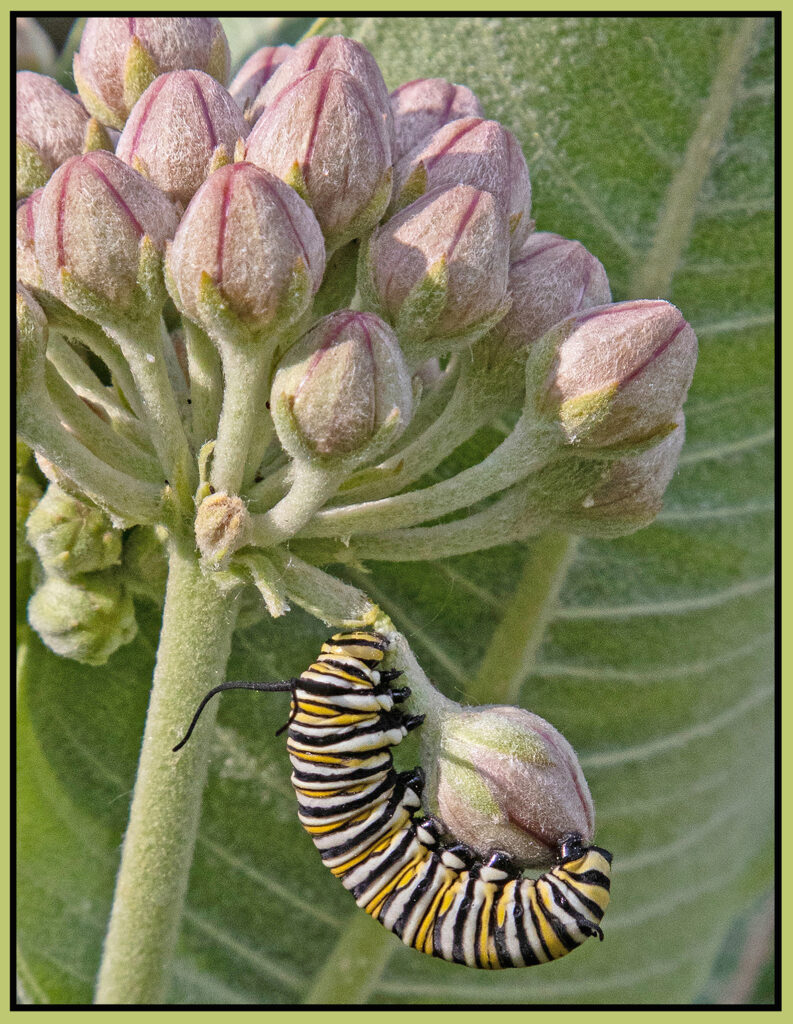
Monarch caterpillar on milkweed.
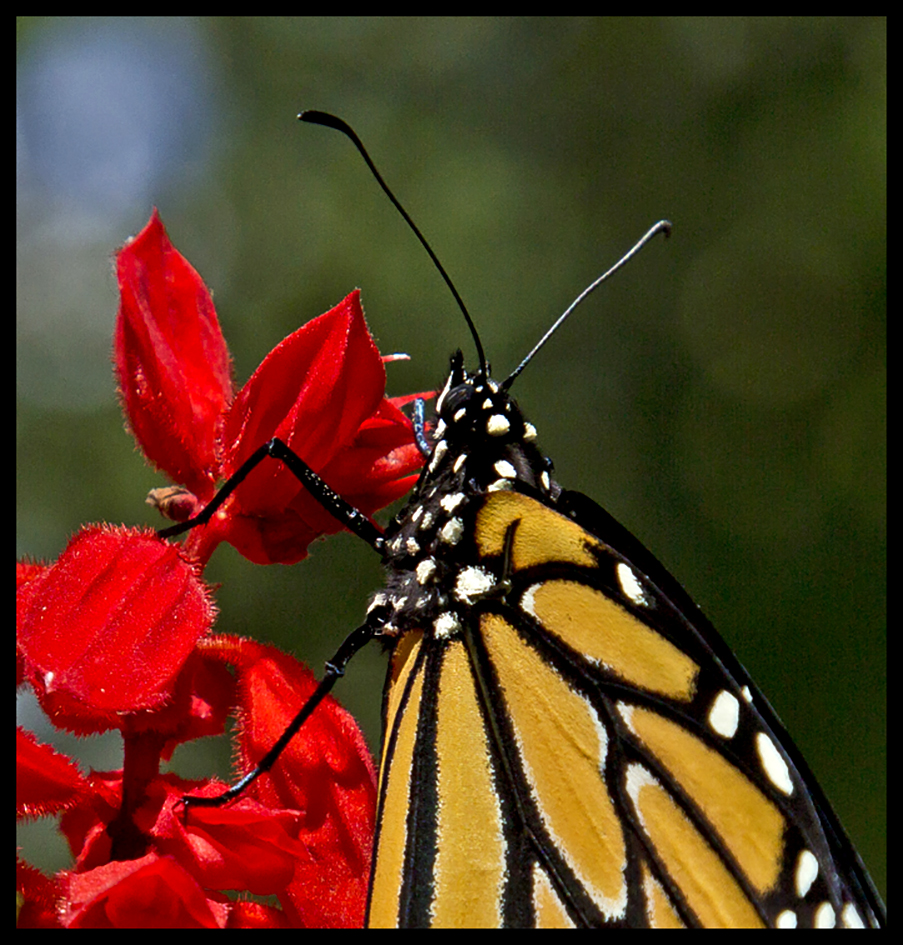
Adult nectaring.
Monarch life cycles are different from other butterflies. The four stages are the same…egg, caterpillar (larva), chrysalis (pupa), and adult, but they also have four generations per year and make a long (as much as 3000 miles) migration. Most adults live 4 to 6 weeks as they sip nectar, find a mate, lay eggs, and then die. The fourth generation, born in late August to October migrates south (to one area in the mountains of Michoacan, Mexico) and live 6 to 8 months.
This fourth generation emerges in the spring from a sort of hibernation where they have gathered by the thousands. Then they start moving north; mating and dying along the way. The next three generations continue the journey north, sometimes reaching their destination, sometimes letting the next generation get there. These first, second and third generations go through the entire metamorphosis process with the adults dying after 4 to 6 weeks.

Mass of wintering monarchs.
My Monarchs are fourth generation caterpillars happily munching milkweed leaves. They grow quickly leaving piles of frass (poop) which I clean out when I give them more fresh leaves. When they are large enough, they spin a silken anchor and attach to a leaf or the jar. They then molt out of their skin which drops to the bottom of the jar. It happens so fast you have to be attentive to see it. The naked caterpillar then transforms itself into a chrysalis. Inside the chrysalis the caterpillar dissolves into a green soup. All vestiges of the original caterpillar disappear.

Caterpillar changing into chrysalis. (Internet image)
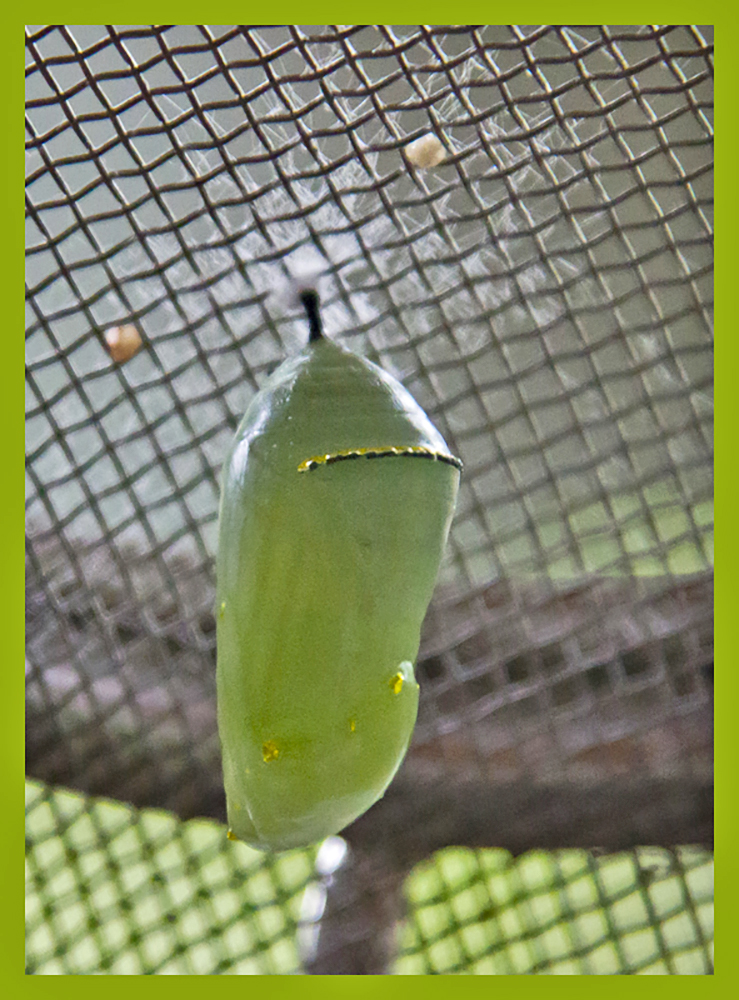
The finished chrysalis.

Monarch adult emerging from the chrysalis. (Internet image.)
According to the internet, they are supposed to emerge 8 to 12 days later. We originally worried the green soup inside the chrysalis wasn’t metamorphosing into an adult. But finally, after sometimes up to 19 days later, the chrysalis starts turning dark. Shortly after that, the butterfly splits out of the clear cover and emerges as an adult butterfly. The wings are crumpled at first. It takes several hours to pump hemolymph (insect blood) into its wings which hardens and stiffens the wings. They are vulnerable at this point because they can’t fly yet. Once the wings are dry, they are ready for the first flight.
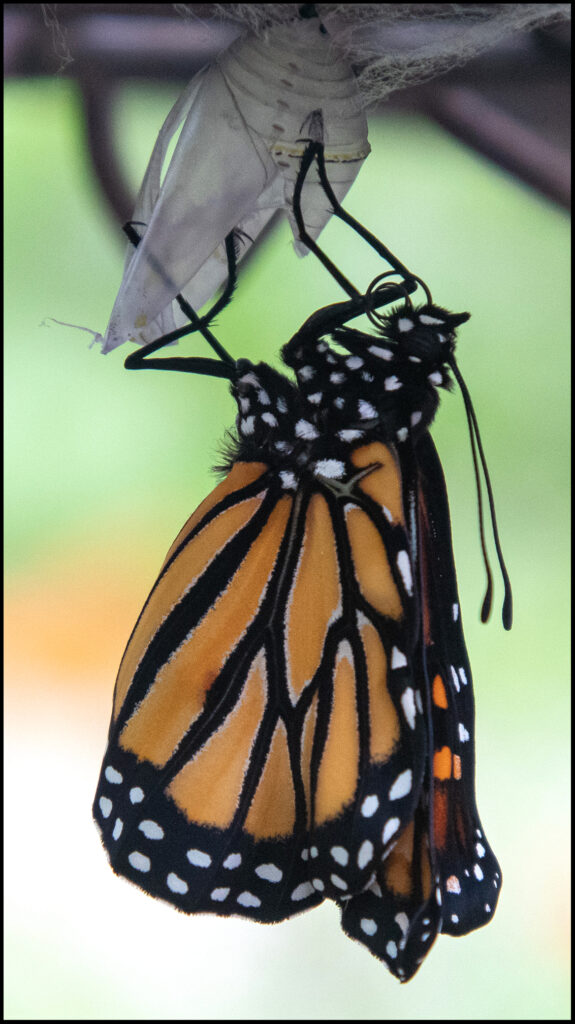
Just emerged adult male.
Small dark dots are found on the hind wings of the males, so you can tell what sex the emerging adult is.
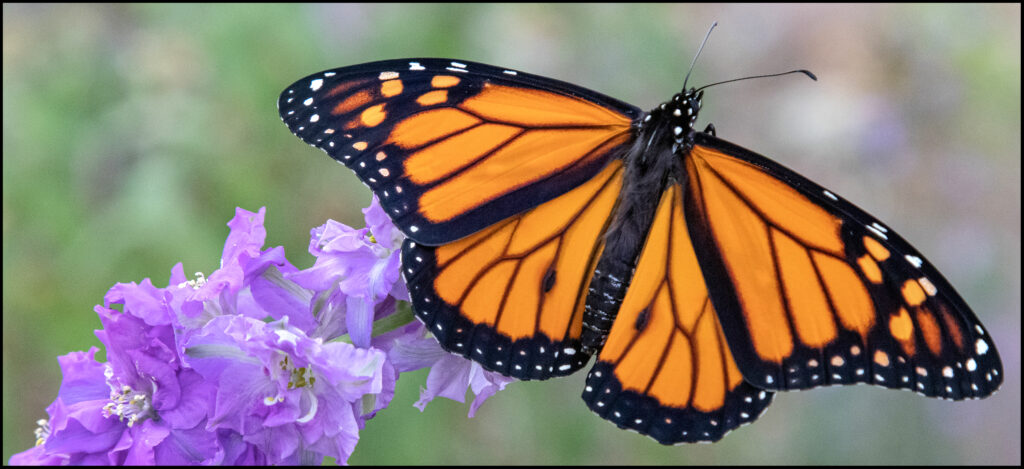
Male monarch ready to fly. Notice the black dots on the hind wings. These are what denote it as a male.
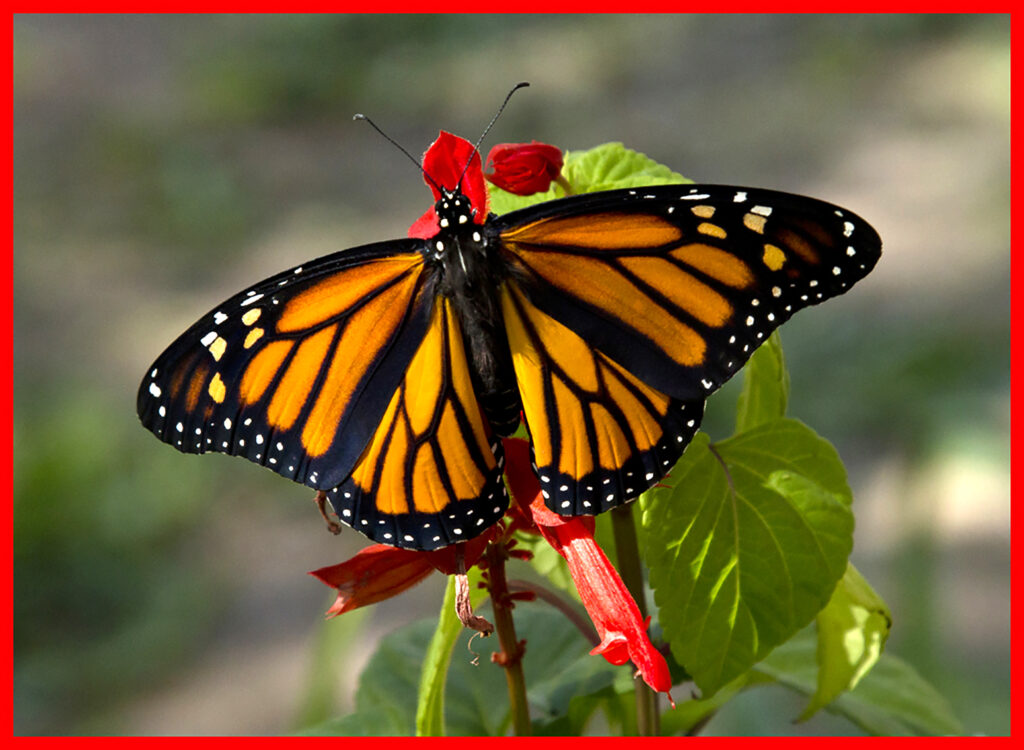
Female monarch. Notice the thicker black lines with no spots on them.
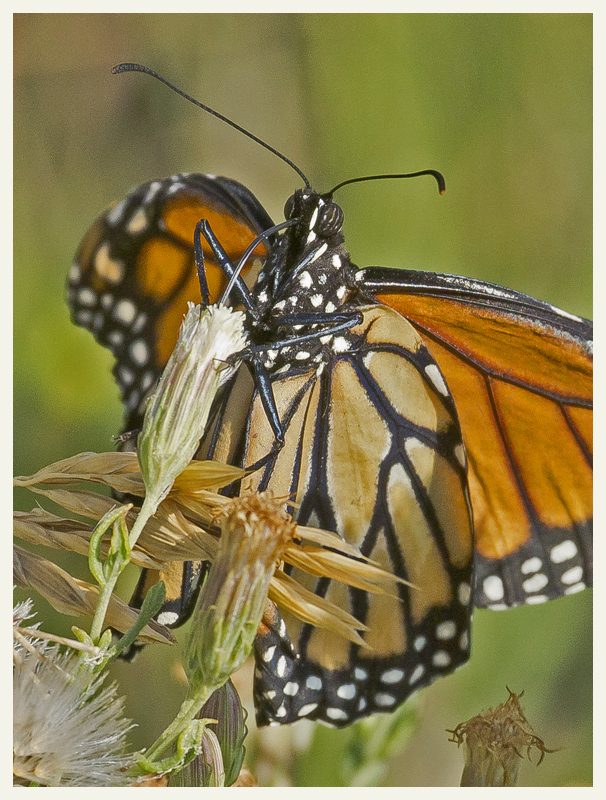
Adult monarch enjoying its first nectar.
The distinctive orange and black markings warn predators that these butterflies taste awful and are toxic. The milkweed plants that the larvae exclusively dine on provide all the nourishment the monarch needs to transform the caterpillar into the adult butterfly. Milkweeds are full of nasty toxins called cardenolides that can make predators vomit. Monarchs have evolved to be immune to these toxins. Most birds know to leave them alone. Unfortunately, birds have to learn that Monarchs taste bad, so sadly, some young birds do kill the adults before spitting them out.
Viceroy butterflies, which are tasty to birds, mimic the Monarch’s coloration to keep predators at bay.
There are many instances of mimicry in nature to save an individual’s life.
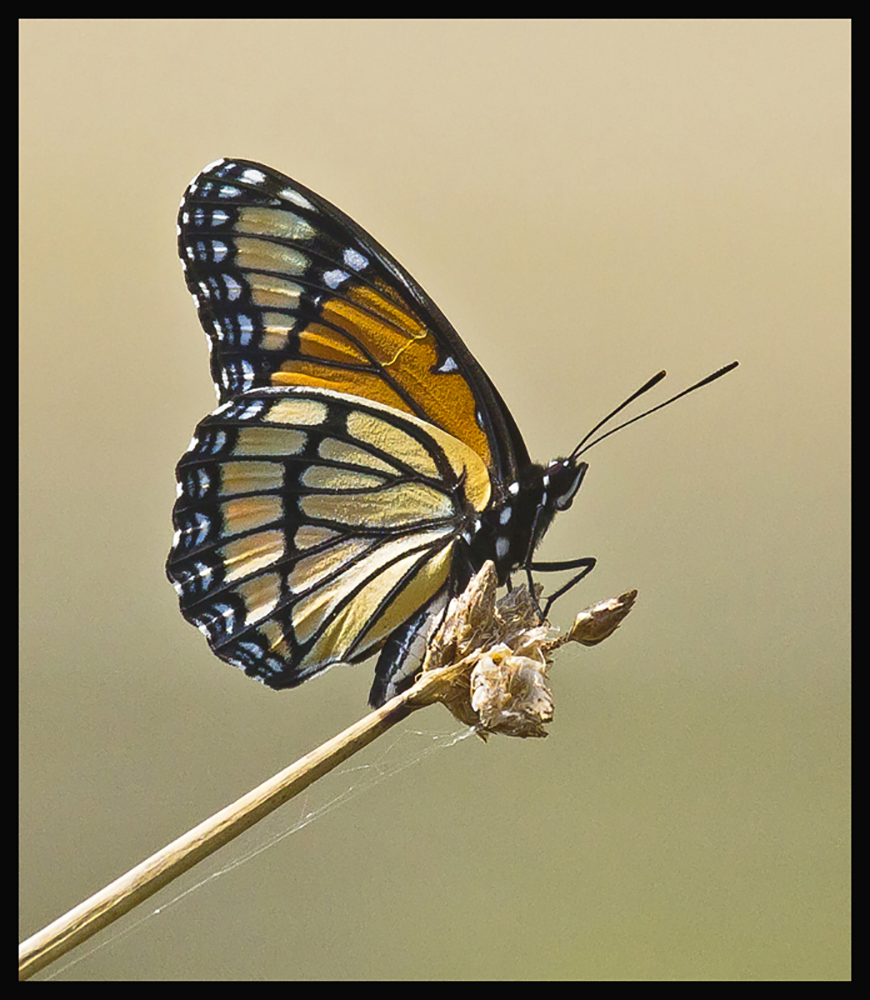
Viceroy butterfly. Notice the similar coloration.
The monarch’s survival is questionable. Their winter area in Mexico is threatened by loggers, their migration routes are threatened by drought in the west and floods in the east, and lack of milkweeds everywhere. If you want to help, plant milkweeds. They depend on it.

One of our males on his first flight lands on a honeysuckle bush.
Monarchs of the eastern part of N. America also migrate to the same place in Mexico. I assume they are in danger also.
There is another population of Monarchs on the west coast that migrate to Pacific Grove, CA in winter. Those butterflies are in even direr straits than our eastern Rockies population.

A wintering monarch on flowers in Pacific Grove, CA.
